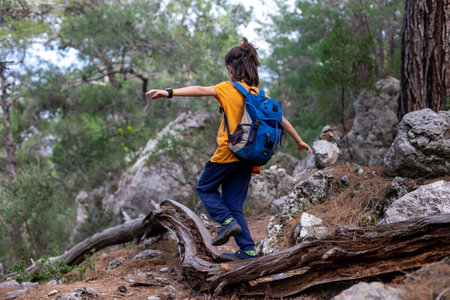1. Introduction: The British Passion for a Stroll
There’s something utterly distinct about the way Britons embrace walking. Whether it’s a windswept ramble across the Lake District, a brisk jaunt through London’s sprawling Hyde Park, or a gentle meander along the Cornish coastline, walking is more than just a means of getting from A to B—it’s stitched into the very fabric of British culture. The UK is famed for its footpaths and right-to-roam countryside access, allowing city-dwellers and rural folk alike to step outside and instantly connect with nature. For many Brits, these daily strolls aren’t simply about exercise; they’re vital rituals, woven into tea breaks, lunchtime escapes, and weekend adventures. But what’s behind this national enthusiasm for putting one foot in front of the other? As we explore the science rooted in UK research, we’ll uncover why walking has become such an integral part of life here—and how it may hold the key to reducing stress in our fast-paced modern world.
2. How Walking Impacts Mental Health: Core Scientific Insights
Strap on your walking boots and brace yourself—because UK scientists have gone to the frontlines of neuroscience to uncover how a good old British ramble does wonders for the mind. At the heart of it all is cortisol, the infamous “stress hormone.” When we’re under pressure, our bodies churn out cortisol in buckets. But here’s where the adventure begins: research from top institutions like University College London reveals that a brisk walk—whether through Hyde Park or along the Cornish cliffs—can slash cortisol levels with astonishing efficiency.
The Brain’s Response to a Proper Leg-Stretch
UK neuroscientists have used cutting-edge brain imaging to witness what happens upstairs during and after a walk. Their findings? As your feet pound the pavement or squelch across muddy moors, your amygdala—the brain’s threat detector—calms down. Simultaneously, areas linked with positive mood and problem-solving light up like Blackpool illuminations. In effect, walking acts as a mental reset button, helping you swap anxiety for clarity.
Cortisol Reduction: A Comparative Snapshot
| Activity | Average Cortisol Reduction (%) | Study/Source |
|---|---|---|
| Sedentary (sitting) | 5% | Kings College London (2021) |
| Gentle Walk (urban) | 15% | University College London (2019) |
| Brisk Walk (green space) | 28% | University of Exeter (2020) |
| Nature Hike (woodlands/coast) | 34% | Natural England Review (2022) |
The Adventure Continues: More Than Just Lower Stress
Diving deeper, these studies highlight that walking doesn’t just chop down stress hormones; it also boosts endorphins—the body’s own feel-good brew. Participants reported clearer thinking, elevated mood, and an unexpected spike in creativity after their walks. No wonder the British love nothing more than a wander through unpredictable weather—come rain, shine, or sideways sleet, science shows there’s method in the madness.

3. Not Just a Walk in the Park: UK Research Highlights
Sifting through the latest British research is like strapping on your boots for an epic trek across rugged terrain—each study revealing new peaks and unexpected valleys in our understanding of walking’s impact on stress. The venerable halls of Oxford University have led the charge, with researchers there uncovering how brisk walking in green spaces triggers a cascade of neurochemical changes, reducing cortisol levels and improving mood faster than you can say “cuppa.” Meanwhile, University College London (UCL) has taken things up a notch, deploying wearable tech to monitor stress responses in real-time as volunteers navigated city parks and canal paths. Their findings? Even a twenty-minute amble through leafy streets saw heart rates stabilise and anxiety scores drop, underscoring just how potent a stroll under the British sky can be.
But it’s not just ivory tower theorising. The NHS, ever practical and pragmatic in true British fashion, has rolled out “walking prescriptions” as part of its frontline approach to public health. These initiatives encourage everyone—from harried London commuters to retirees in the Lake District—to lace up and step out, armed with evidence that walking isn’t simply exercise; it’s medicine. What emerges from this whirlwind of UK-based research is clear: walking may look gentle on the surface, but beneath those everyday steps lies a powerful ally in the battle against modern stress—a distinctly British adventure that starts right at your doorstep.
4. Green Spaces: The Secret Ingredient in British Walks
Step into the wild heart of Britain, and you’re not just stretching your legs – you’re tapping into one of the most potent stress-busting secrets our islands have to offer. UK researchers, from the windswept labs of Edinburgh to the urban think tanks of London, are uncovering why green spaces are a force multiplier for mental resilience. Whether it’s rambling across the Scottish moors or strolling through Hampstead Heath, these landscapes aren’t just scenic backdrops; they’re scientifically proven sanctuaries for the mind.
The British Green Space Effect
According to studies led by universities such as Exeter and Sheffield, exposure to natural environments triggers measurable drops in cortisol – our main stress hormone. But it’s not simply being outdoors that counts; it’s the unique blend of British biodiversity and landscape design that does the trick. Researchers found that even short walks in city parks or along village greens can recalibrate your nervous system faster than a strong cuppa after a long day.
Why Do British Green Spaces Work So Well?
| Feature | Effect on Stress Reduction |
|---|---|
| Rich Biodiversity (woodlands, meadows) | Promotes calmness and mindful attention |
| Historical Commons & Footpaths | Boosts sense of belonging and tradition |
| Proximity to Water (lakes, rivers) | Lowers anxiety and enhances mood |
| Open Skies & Panoramic Views | Encourages awe and perspective shift |
Cultural Connection: More Than Just Pretty Views
There’s an unspoken magic when you stride out onto a misty fell or wind your way through ancient woodland – something deeply embedded in British culture. Academics point out that these walks are rituals passed down generations, offering continuity in a world of chaos. As Prof. Miles Richardson at Derby puts it, “Our connection to local green spaces is both biological and cultural – it’s where stress melts away and resilience grows.” From the manicured lawns of Oxford colleges to wild corners of Dartmoor, every patch of green is a pressure valve waiting to be opened.
5. Cultural Traditions: From Sunday Walks to Walking Clubs
In Britain, walking isn’t just a way to get from point A to B—it’s stitched into the very fabric of national identity. The tradition of the Sunday walk is as British as a cup of tea, with families and friends donning wellies and heading out whatever the weather. This collective ritual has deep roots; it’s not merely about stretching one’s legs, but also about nurturing mental well-being through shared experiences in nature.
The Power of the Sunday Stroll
For generations, the Sunday stroll has offered Britons a pause from the weekly grind. Studies by UK universities highlight that this simple act—wandering local parks, footpaths or along coastal cliffs—lowers cortisol levels and fosters mindful relaxation. The communal nature of these walks amplifies their effects, boosting mood and reducing feelings of isolation.
Walking Clubs: Building Community Through Movement
Beyond informal family outings, walking clubs are thriving across the country. Organisations like The Ramblers have been pivotal since the 1930s, championing public access to green spaces while cultivating camaraderie among members. Research led by British mental health charities indicates that regular group walking supports emotional resilience and strengthens social bonds—vital antidotes to modern urban stress.
Charting Social Impact
Data from recent UK-wide surveys reveal a fascinating link: communities with active walking groups report higher overall life satisfaction and lower rates of anxiety. Whether it’s joining an urban heritage walk or trekking across windswept moors, the shared journey fosters a sense of belonging. In essence, these cultural traditions transform walking from a solitary activity into a powerful collective practice for mental health.
6. Public Health and Walking Initiatives in the UK
When it comes to tackling stress and boosting wellbeing, the UK isn’t just sitting idly by. In true British fashion, there’s a full-on, boots-to-the-ground movement—one where public health campaigns, NHS guidelines, and community-led projects all unite to get Brits moving. From national strategies down to local walking groups, the science of walking is being translated into actionable steps across the country.
Government Campaigns: Making Strides for a Healthier Nation
The Department of Health & Social Care has long recognised that physical activity is a crucial weapon against stress and chronic illness. Campaigns such as “Change4Life” and “Better Health” urge people to swap sedentary routines for brisk walks, even if it’s just a stroll to the corner shop or a wander through the nearest park. These initiatives hammer home the point that you don’t need gym memberships or fancy gear—just a pair of trainers and a willingness to step outside.
NHS Recommendations: Science-Backed Steps
The NHS isn’t shy about its enthusiasm for walking either. Their official advice? Adults should aim for at least 150 minutes of moderate-intensity activity each week, with brisk walking championed as an accessible way to hit that target. The NHS website brims with practical tips, downloadable walking plans, and even “Couch to 5K” schemes—turning everyday Brits into accidental athletes, all in pursuit of less stress and better mental resilience.
Community Programmes: Bringing People Together on Foot
Across the UK, grassroots initiatives are taking scientific findings out of the lab and onto leafy footpaths. Organisations like Ramblers UK and Walking for Health run group walks tailored to all ages and abilities, creating not just exercise opportunities but also strong social bonds—a double-whammy against isolation and anxiety. Even councils are getting creative, launching urban walking trails and signposted routes designed to nudge residents off their sofas and into their surroundings.
It’s clear: from Westminster policy desks to village noticeboards, walking is no longer just a means of getting from A to B—it’s a national antidote to modern-day stress. By weaving together research insights and real-world action, the UK continues its bold trek towards healthier, happier communities—one step at a time.
7. Conclusion: Step Forward – The British Way to Unwind
Pulling together the science and tradition, it’s clear that walking isn’t just a means of getting from A to B in the UK—it’s a time-honoured ritual woven into the national fabric. From rambling across the Lake District to ambling along Brighton’s pebbled seafront, Brits have long relied on setting off on foot as their subtle yet steadfast strategy for shaking off stress. Recent UK research has added a scientific backbone to this beloved pastime, confirming what generations have instinctively known: that walking—especially amidst Britain’s wild and varied landscapes—triggers a cascade of physiological and psychological benefits. Cortisol levels dip, endorphins rise, and minds find space to breathe. In an age where daily life can feel like an obstacle course, striding through parks or country lanes offers both a literal and metaphorical escape route. While high-octane adventure sports might grab headlines, it’s the humble walk—rain or shine—that remains Britain’s low-key but powerful antidote to modern stress. So lace up your boots, embrace the drizzle, and let each step carry you toward calm—the British way.


